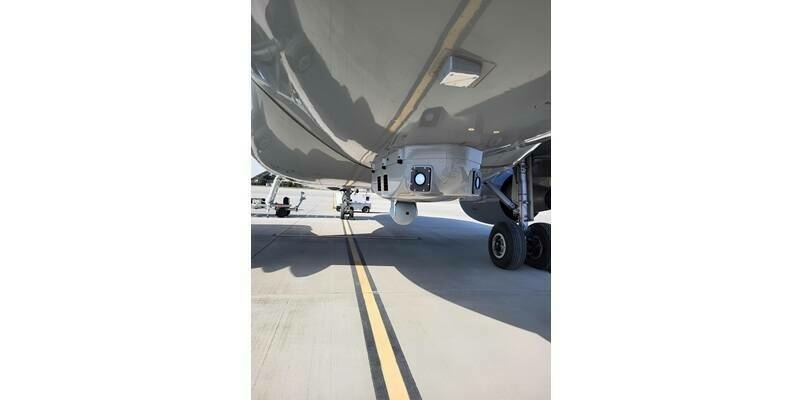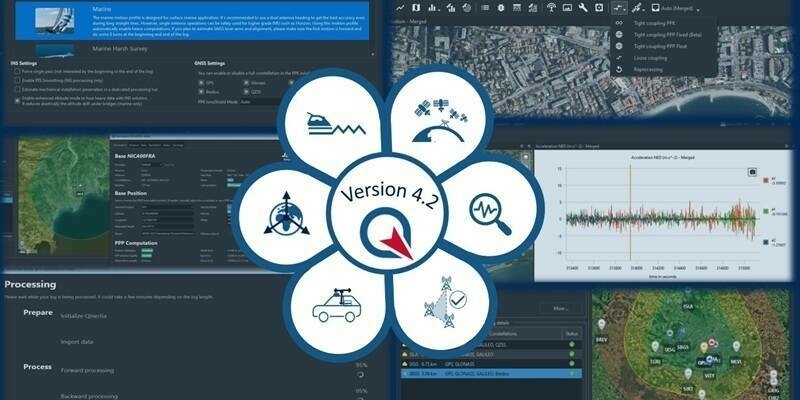“Photogrammetry is ahead of its time because everything is already fully digital in this discipline,” underlines Heinz-Jürgen Przybilla, Professor of Geodesy at Bochum University of Applied Sciences. The art of using photographs for surveying, which laid the foundation for present-day photogrammetry, dates back 150 years and involves developing processes to derive information from images that go far beyond simply viewing them. In recent years in particular, the discipline has made such progress that businesses are discovering more and more areas of application.
The main reason for this is the high level of automation, which makes it possible to interpret huge volumes of data from sources such as large-scale satellite imagery. The process also works in real time, which is a prerequisite in applications such as autonomous navigation. “Automation in image evaluation makes people incredibly flexible. We’re no longer restricted to viewing the world from our own height,” stresses Professor Christian Heipke, President of the International Society for Photogrammetry and Remote Sensing (ISPRS). Humans are literally outgrowing themselves with the power of their images. UAVs, digital cameras and image sensors on the Internet of Things, in aircraft or on satellites are opening up applications that only the world of science was predicting a few years ago.
From land register to disaster prevention
And that’s attracting a great deal of attention. As Przybilla reveals, for instance, image evaluations from UAVs are already being used for high-precision land register surveys of development areas. What takes days manually can now be accomplished in a matter of minutes. Other applications include disaster prevention and monitoring refugee movements. In many cases, drones or satellites provide a rapid overview, while satellites offer the large-scale basis for evaluating a situation. In architecture, 3D models from aerial images complement CAD plans – and in conjunction with virtual reality, for example, enable design variants for a building to be depicted in the actual environment. Information is also being shared with disciplines such as computer vision and robotics, with “seeing robots” increasingly recording and mapping their surroundings. Photogrammetry applications are moving into numerous sectors and tackling a whole host of challenges. Global change is being documented using images from space, the same data is being used to forecast crop sizes and inaccessible structures are being monitored with the help of images from UAVs.
Increasingly like a black box, with ever more visionary applications
One development that scientists are keeping a close eye on is that the processes and algorithms on which the evaluations are based are becoming ever more like a black box for many groups of users. “We’ve therefore included this very topic in the INTERGEO conference,” says Przybilla. And while the black box is getting bigger, scientists are refining their methods. “We’re increasingly combining existing data and this will leverage a huge amount of new potential,” explains Heipke. Once the process of image content recognition is automated, the applications are limitless. They range from a farm forecasting how many tonnes of olives it will have ready for the market in four weeks’ time or an energy company detecting leaks in a district heating line in an automated process using thermal cameras to blind people gaining a large measure of independence by being able to navigate autonomously in the digitalised world. The possibilities know no bounds.
Several sessions organised by the German Society for Photogrammetry, Remote Sensing and Geoinformation (DGPF) at the INTERGEO conference will be looking at topical issues in photogrammetry. The contents of the presentations range from new sensors in photogrammetry and remote sensing to “engineering geodesy meets photogrammetry” and much more besides. A large number of companies will also be showcasing their image evaluation solutions at INTERGEO’s specialist exhibition.
Register for the INTERGEO conference now at http://www.intergeo.de/intergeo-en/conference/conference-programme.php, where you’ll also find the detailed conference programme and the accompanying specialist excursions.
Further information is available at www.intergeo.de
Relevant interviews and video clips can be found at www.intergeo-tv.com
Subscribe to our newsletter
Stay updated on the latest technology, innovation product arrivals and exciting offers to your inbox.
Newsletter

